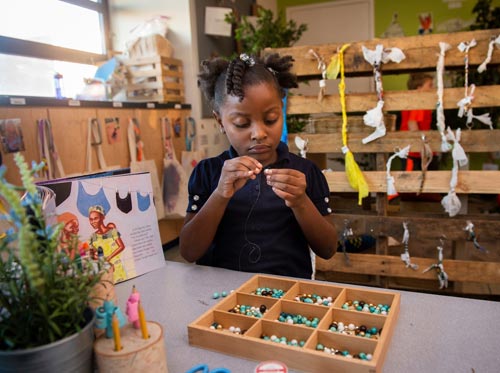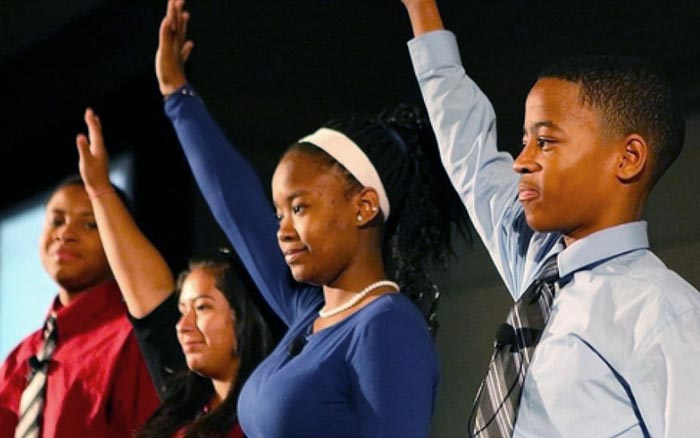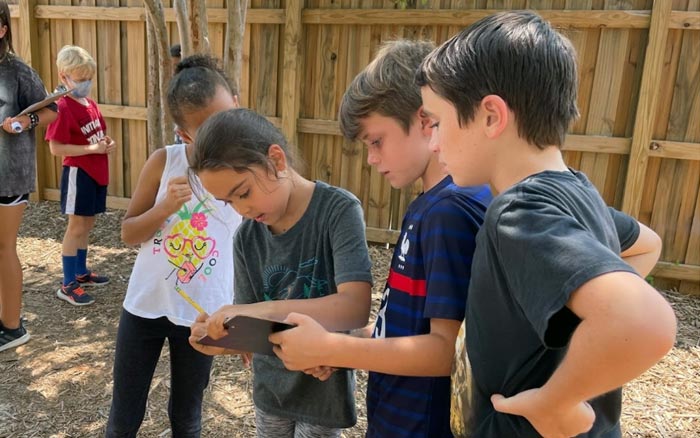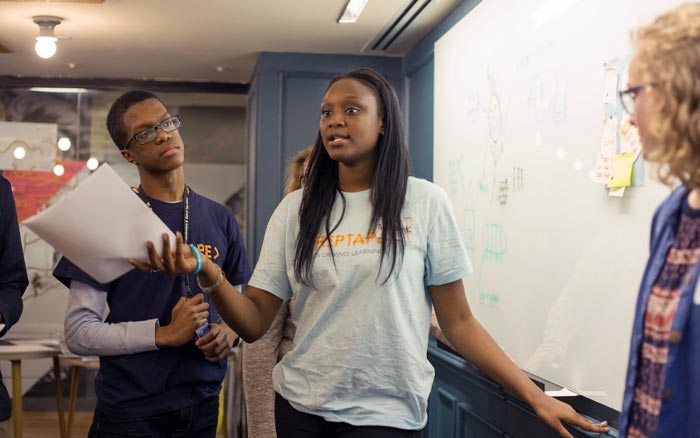
For many learners, school has been not only the context where they learn essential knowledge and skills but also the context where they learn to be compliant. In these contexts, learners are expected to passively absorb the knowledge, skills, mindsets, and behaviors modeled and taught by adults and are pushed to comply with rules and routines developed for them through extrinsic rewards and punitive consequences. This has unfairly impacted some learners more than others, often based on factors connected to who they are and where they are from. But if all learners are going to be prepared to thrive in and transform the world, this can no longer be the case. Young people must drive their learning.

When young people participate in decisions about how, when, where, and what they learn in meaningful and developmentally appropriate ways, it increases their motivation, ownership, and thoughtfulness about their learning. This is because they have a sense of control and are able to shape learning to be relevant to their interests, needs, and goals. In addition, active learning helps to more meaningfully encode knowledge, skills, and mindsets into long-term memory, which makes learning more long-lasting. Ensuring that young people are active participants in the learning process also prepares them for postsecondary success as it builds an array of learning habits and executive functioning skills. In fact, current trends, such as the rise of automation and the rate of technological advancement, indicate that learners need these skills in order to become self-driven, curious, lifelong learners who are able to make decisions that fit their needs and goals.
This Leap Means…
- Learners having meaningful opportunities to shape how, when, where, or even what they learn in developmentally appropriate ways.
- Learners discovering knowledge and applying skills through hands-on, learner-led work.
- Learners engaging in self-directed learning time where they can explore curiosities, play, discuss, set goals, get into a flow state, and more.
- Learners experiencing adults who listen deeply and respond with questions, ideas, and actions.
- Learners building knowledge, skills, and mindsets that underpin self-direction such as self-awareness, goal setting, and reflection.
The brain develops according to how it’s used…by encouraging our kids…to make their own decisions, we are giving them invaluable experience in assessing their own needs honestly, paying attention to their feelings and motivations, weighing pros and cons, and trying to make the best possible decision for themselves.”
William Stixrud, PhD & Ned Johnson
Examples
EL Education (Grades K–12)
EL Education’s comprehensive school model builds learner capacity for three Dimensions of high achievement—character, mastery of skills and content, and high-quality learner work—through the application of Core Practices centered in real-world learning and teamwork. Every aspect of the model, from Learning Expeditions to student-directed learning to Crew, supports young people in directing their learning; it provides opportunities for them to track their progress, set goals, use assessments to understand their successes and failures, and more.

Montessori from the National Center for Montessori in the Public Sector (Ages 0–18)
The Montessori model is rooted in human development and centers independence and agency within a social community to foster a sense of purpose and collective responsibility. The model gives a high degree of freedom to children to choose what to work on, where, for how long, and with whom, allowing learners to engage in learning that interests them, which supports increased engagement, sustained attention, and intrinsic motivation.

Self-Directed Learning Model from The Forest School (Grades PK–12)
The Forest School’s Self-Directed Learning model empowers learners to take ownership of their learning, supporting them to set meaningful goals, uphold community agreements, exercise their voice and choice in the learning process, and engage in real-world work. The model’s key components—Socratic Launches, Running Partners, Core Skills, Contracts & Town Halls, and Quests—are largely learner-led, providing learners meaningful voice and choice in the decisions about how and what they learn.

The Learning Challenge from GripTape (Ages 14–19)
The Learning Challenge invites young people aged 14 through 19 to tap into their interests and supports them in pursuit of a self-identified learning topic that is meaningful to them and their growth. During the Learning Challenge, young people have total decision-making authority, and engage in a dynamic cycle of setting a vision and goals, pursuing learning, and reflecting on progress—key processes involved in enacting their agency.


